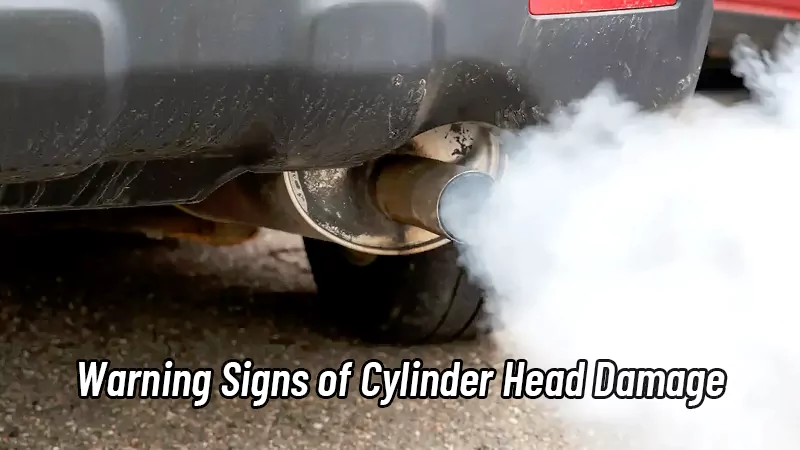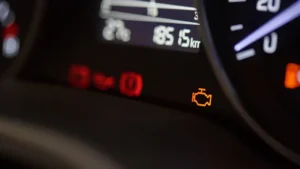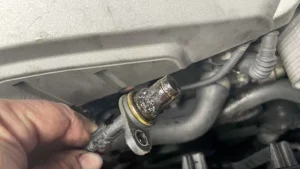Your car’s engine is a finely tuned system where many components must work together to ensure smooth operation. At the heart of this system is the cylinder head, which regulates air intake, fuel combustion, and exhaust flow. When the cylinder head is in good condition, the engine delivers power efficiently. However, when it develops cracks, warping, or other damage, the entire engine can be affected.
Recognizing the symptoms of cylinder head problems early can save you from costly repairs or even complete engine failure. This article explores the most common signs of cylinder head issues, explains why they occur, and highlights the importance of timely action.

White Smoke from the Exhaust
One of the most visible indicators of cylinder head problems is thick white smoke coming from the exhaust. This usually indicates that coolant is leaking into the combustion chamber through a crack or a failing gasket, where it burns along with the air-fuel mixture, producing dense white smoke. Many drivers first notice this during cold starts or acceleration.
It is important to note that in winter, white smoke during cold starts is often simply water vapor condensing in the cold air, which is normal and not a sign of engine trouble. In contrast, white smoke caused by cylinder head damage typically persists even when the engine reaches normal operating temperature or in warmer weather and may be accompanied by power loss, engine misfires, or unusual fluid mixtures. Observing the duration and accompanying symptoms can help distinguish normal seasonal smoke from a serious cylinder head issue.
Persistent Engine Overheating
Overheating is both a cause and a symptom of cylinder head problems. A cracked or warped cylinder head can disrupt coolant flow, preventing the engine from maintaining its normal operating temperature. A damaged head gasket may also allow coolant to leak, reducing cooling efficiency. Even if coolant levels appear normal, a compromised cylinder head can still lead to overheating. If left unchecked, this can further damage the cylinder head and potentially result in complete engine failure.
Loss of Power and Engine Misfires
A cracked or warped cylinder head affects the compression ratio inside the combustion chamber. Proper compression is essential for efficient combustion, and when it is lost, engine performance drops significantly. Drivers may notice sluggish acceleration, increased fuel consumption, rough idling, or frequent misfires. In severe cases, the engine may stall. These performance issues are often the first day-to-day indicators of cylinder head problems.
Coolant and Oil Mixing
One of the most serious symptoms of cylinder head damage is the mixing of coolant and engine oil. Cracks or warping can allow fluids to pass between channels that are normally separate. On the dipstick or under the oil cap, the mixture appears milky or frothy. This not only signals a major cylinder head problem but also indicates that the engine is no longer properly lubricated, increasing the risk of severe internal damage. Immediate professional inspection is crucial when this symptom appears.
External Coolant or Oil Leaks
Sometimes, cylinder head problems can be identified without opening the engine. Cracks on the cylinder head surface may cause external coolant or oil leaks, leaving wet spots around the engine or drips beneath the vehicle. These leaks are often accompanied by the smell of burning fluids as they contact hot engine parts. Although external leaks may seem less severe than internal mixing, they still indicate structural weakness and require timely repair or replacement.
Unusual Engine Noises
Changes in engine sound can also indicate cylinder head problems. Ticking, knocking, or metallic tapping noises often mean that valves are not opening and closing properly due to warping or internal stress in the cylinder head. Since the cylinder head directly affects valve operation, any damage disrupts timing and rhythm, producing noises that should not occur in a healthy engine.
Cylinder head problems rarely resolve themselves. Small cracks, minor warping, or minor leaks will worsen over time. Issues that could have been solved with minor repairs often evolve into full cylinder head replacements. Early recognition is therefore critical not only to save repair costs but also to prolong engine life and ensure driving safety and reliability.
Conclusion
The main symptoms of cylinder head problems include white exhaust smoke, persistent overheating, loss of power, engine misfires, coolant and oil mixing, external leaks, and unusual engine noises. Each of these signs indicates compromised engine performance and potential damage. By understanding these warning signals, vehicle owners can take timely action to repair or replace the cylinder head before small problems escalate into major engine failure.
If you are a distributor, workshop, or auto parts wholesaler looking for reliable cylinder head solutions,at XINJIN, we are a professional cylinder head manufacturing and remanufacturing factory. We provide high-quality products, support customization, and offer bulk supply to meet your business needs. Contact us today to discuss cooperation and secure dependable cylinder head solutions for your market.



